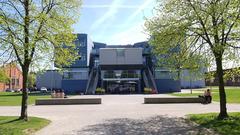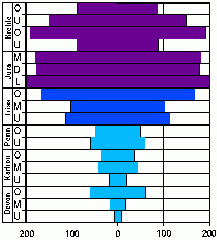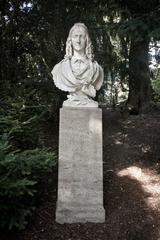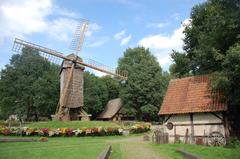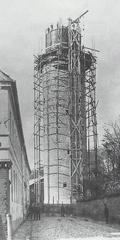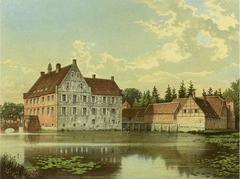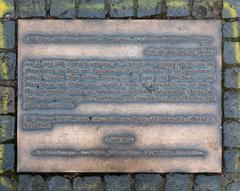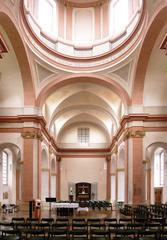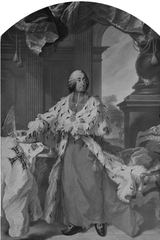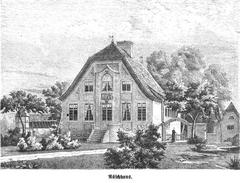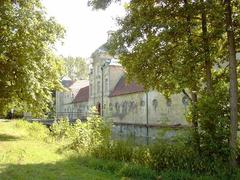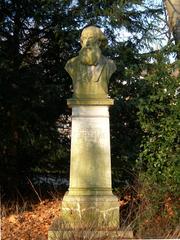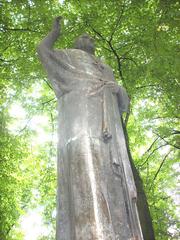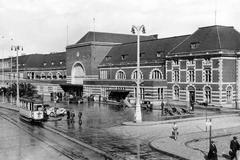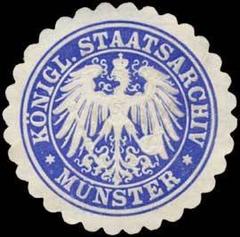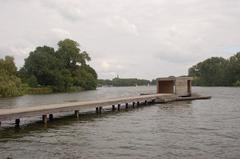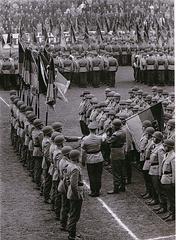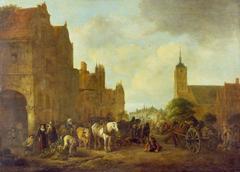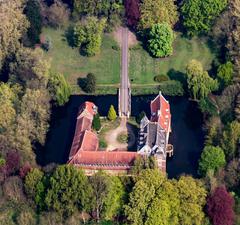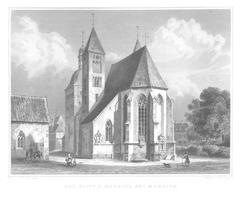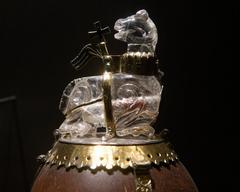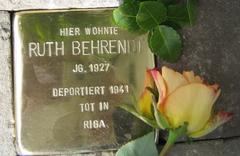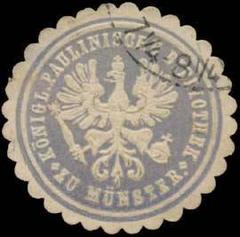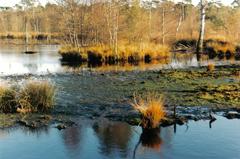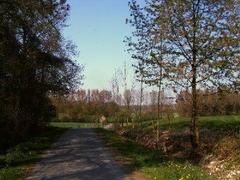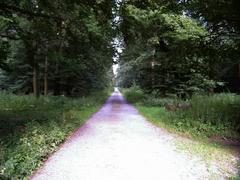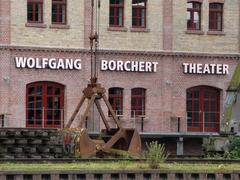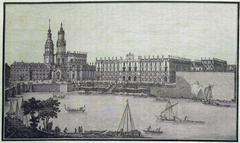Visiting Dyckburg-Kirche, Münster: Hours, Tickets, and Tips
Date: 01/08/2024
Introduction
Dyckburg-Kirche, also known as St. Mariä Himmelfahrt, is a gem of Baroque architecture nestled in the Dyckburg district of Münster, Germany. This Catholic church not only serves as a place of worship but also stands as a testament to centuries of rich history and architectural evolution. From its origins as a medieval moated castle first mentioned in 1400 (Münsterland), to its transformation under the renowned Westphalian baroque architect Johann Conrad Schlaun in the 18th century (Bistum Münster), Dyckburg-Kirche encapsulates the historical and cultural fabric of the region. The site also played a significant role during the Münster Rebellion of 1534-1535, serving as the headquarters for Bishop Franz von Waldeck’s troops (Peter Goeman). Today, it offers visitors a unique blend of historical intrigue, architectural splendor, and serene natural surroundings.
Table of Contents
- History of Dyckburg-Kirche, Münster
- Visitor Information
- Memorials and Cultural Significance
- Architectural Highlights
- Visitor Experience
- Conclusion
- References
History of Dyckburg-Kirche, Münster
Origins and Early History
Dyckburg-Kirche, also known as St. Mariä Himmelfahrt, is a Catholic church located in the Dyckburg district of Münster, Germany. The site where the church stands today has a rich history dating back to the medieval period. Initially, it was the location of a moated castle first mentioned in 1400 as “masus to dycke” (house to the pond) (Münsterland). This castle served as a strategic military base for the Prince-Bishop of Waldeck during the siege of Münster in the 16th century (Second Wiki).
The Münster Rebellion
One of the most significant historical events associated with the Dyckburg site is the Münster Rebellion of 1534-1535. During this period, the castle was used as the headquarters by Bishop Franz von Waldeck. The bishop’s troops, commanded by Count Wirich von Dhaun, gathered here before storming the walls of Münster, which was then under the control of the Anabaptists (Peter Goeman). This rebellion is a notable chapter in church history, highlighting the intense religious and political conflicts of the time.
Transformation into a Religious Site
In the early 18th century, the site underwent a significant transformation. Provost Christian von Plettenberg-Marlhülsen acquired the property in 1722 and commissioned the renowned Westphalian baroque architect Johann Conrad Schlaun to design a small chapel. This chapel, completed in 1740, was modeled after the Italian pilgrimage basilica of Loreto (Bistum Münster). The chapel’s design included baroque elements that are still evident today, particularly in the church’s interior.
Expansion and Architectural Developments
The 19th century saw further developments at the Dyckburg site. In 1894, the estate was purchased by Reichsgraf Bonifatius von Hatzfeld-Trachenberg, who commissioned architect Wilhelm Rincklake to expand the chapel. Rincklake added an octagonal dome and a neo-baroque choir area, enhancing the church’s architectural grandeur (Wiki Münster). Additionally, a burial chapel was constructed in 1914, where Bonifatius and his wife Olga were later interred.
Visitor Information
Visiting Hours and Tickets
The Dyckburg Church is open to visitors at various times throughout the week. To plan your visit, it is advisable to check the most current visiting hours on the official website or contact the parish office. Admission to the church is free, but donations are welcomed to help with its upkeep.
Travel Tips
The church is easily accessible by public transport or car. There is ample parking available near the site. For those using public transport, local buses run frequently from Münster city center to Dyckburg.
Nearby Attractions
While visiting the Dyckburg Church, you can also explore other historical sites in Münster, such as the Münster Cathedral and the Prinzipalmarkt. The surrounding area offers beautiful trails for hiking and cycling, allowing visitors to enjoy the natural beauty of the region.
Accessibility
The church is committed to being accessible to all visitors. Wheelchair access is available, and assistance can be arranged for those with mobility issues. It is recommended to contact the parish office in advance to ensure any specific needs are met.
Special Events and Guided Tours
The Dyckburg Church hosts various special events throughout the year, including religious festivals, concerts, and community gatherings. Guided tours are available upon request and can provide deeper insights into the church’s history and architecture. These tours are a great way to learn more about the unique features and historical significance of the site.
Memorials and Cultural Significance
The Dyckburg Church also serves as a memorial site. Inside the church, there are two ornate name plaques commemorating those who died in the World Wars. These plaques list the names and ranks of the fallen, including Reichsgraf Bonifatius von Hatzfeld-Trachenberg (Denkmalprojekt). The inscriptions on these plaques serve as a poignant reminder of the church’s role in the community’s history and its connection to broader historical events.
Architectural Highlights
The architectural significance of the Dyckburg Church cannot be overstated. Johann Conrad Schlaun’s influence is evident in the baroque elements that adorn the church. The design of the chapel, inspired by the Loreto basilica, features intricate details and a harmonious blend of romantic and baroque styles (Bistum Münster). The neo-baroque additions by Wilhelm Rincklake in the late 19th century further enhance the church’s aesthetic appeal, making it a notable example of ecclesiastical architecture in the region.
Visitor Experience
Today, the Dyckburg Church is not only a place of worship but also a popular destination for visitors. The church’s serene setting amidst woods and meadows offers a peaceful retreat for those looking to explore the historical and architectural beauty of the site. Visitors can tour the church’s interior by request or during scheduled services (Münsterland). The surrounding area is ideal for hiking and cycling, providing a perfect blend of cultural and natural experiences.
Conclusion
Visiting Dyckburg-Kirche in Münster is akin to stepping back in time, offering a profound glimpse into the region’s historical and architectural legacy. From its early days as a strategic military base to its transformation into a baroque masterpiece, the church stands as a testament to the enduring influence of history and artistry. The architectural brilliance of Johann Conrad Schlaun, coupled with the neo-baroque additions by Wilhelm Rincklake, creates a harmonious blend of styles that captivate visitors (Bistum Münster, Wiki Münster). Beyond its architectural allure, Dyckburg-Kirche serves as a memorial and cultural landmark, with plaques commemorating those who perished in the World Wars (Denkmalprojekt). The church’s commitment to accessibility and the availability of guided tours ensure that all visitors can fully appreciate its historical and cultural significance. For those looking to explore further, the surrounding area offers a plethora of attractions, from the historic Münster Cathedral to the picturesque trails ideal for hiking and cycling. Whether you are an architecture enthusiast, a history buff, or simply seeking a peaceful retreat, Dyckburg-Kirche promises an enriching and unforgettable visit. Plan your journey today and immerse yourself in the rich tapestry of Münster’s heritage.
References
- Münsterland. (n.d.). House Dyckburg. https://www.muensterland.com/en/tourism/topics/adventure-region/castles-and-palaces-in-the-munsterland/house-dyckburg/
- Bistum Münster. (2021). Dyckburg Kirche Münster. https://www.bistum-muenster.de/sommer2021/dyckburg_kirche_muenster/
- Peter Goeman. (n.d.). The Münster Rebellion: Unveiling the Forgotten Chapter in Church History. https://petergoeman.com/the-munster-rebellion-unveiling-the-forgotten-chapter-in-church-history/
- Denkmalprojekt. (2009). MS-Dyckburg Kath Kirche WK1u2 MS. http://www.denkmalprojekt.org/2009/ms-dyckburg_kath_kirche_wk1u2_ms.htm
- Wiki Münster. (n.d.). Dyckburg-Kirche. https://wiki.muenster.org/index.php/Dyckburg-Kirche
